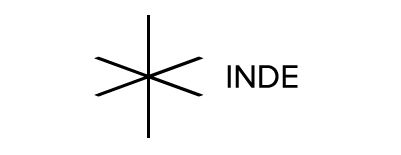9+3 essential Terms you need to know in Augmented and Virtual Reality
As we head towards 2017 we see the conversation around Augmented Reality and Virtual Reality seep into the mainstream. The problem, as always with new technology, is that 90% of the knowledge lays with 10% of the people. This unfortunately makes for a lot of confusion given that advertising agencies are not equipped to produce, clients are not educated on how to brief their agencies and institutions such as theme parks, aquariums and museums don’t have the in-house resource to explore their alternatives.
Ironically, given the desperate need to separate the two industries by the players involved, in terms of content production there are huge similarities between Augmented Reality and Virtual Reality. Sadly neither industry seems to try to dispel this myth.
In an effort to further the conversation here are the first 9 terms you’ll hear and what they mean in the increasingly exciting world of augmented reality and virtual reality. Much more to follow over the coming weeks.
Marker / Trigger
Commonly used to describe the design / print material that “triggers” the 3D content to appear when you point your mobile device at it. Applications on mobile devices require a trigger to know when/where to place the content so a print marker locks it to its position. Print markers can be books, stickers, posters, billboards or any printed material placed anywhere in the world.
Render Engine
3D is delivered by a system that either "pre-creates" or "live-creates" the content. All augmented reality experiences that require the display of 3D content will need one. Engines such as Unity and Unreal are two of the chosen programs for the AR industry.
Motion Capture
Motion capture has been used in animation studios around the world for many years. Using either a suit with sensors attached or a multi-camera system that measures the movement a la avatar, we can measure the movement of a human being and then take that data use it to control and move a humanoid character.
GPS Trigger
We could describe the intricacies of this technology but there’s one simple way: Pokemon Go. Developers of the application plot points on a map which tells the application where in the world to show the 3D content. Pokemon Go was simply checking the map and then deciding when and what to show on each person’s device.
Live Render
3D content comes in two distinct forms. Live Render is a slightly lower quality but highly interactive version of 3D. Effecitvely the computer is “creating” and displaying the content in real time, as it would in a game. This allows it be changed in real time as circumstances change around it.
Pre-Render
Pre-render is the polar opposite of live render. To put it simply pre-render like a roll of film, i.e it runs along a defined sequence and cannot be changed in real time. Because it has been pre-rendered, it generally will be of a slightly higher quality in terms of textures, colours etc.
Gesture Control
The ability to recognise and interpret movements of the human body in order to interact with and control a computer system without direct physical contact. Kinect is a good example of a camera that recognises the movements of a user and allow them control content accordingly.
Mobile AR
A catch-all term for an augmented reality experience that has been created for mobile devices such as iOS and Android. These experiences are delivered through an application that is downloaded from the device app store. The app opens the mobile device camera and uses it to trigger content through “markers” outlined above.
Mixed Reality
A slightly confusing term that sees it origins not in augmented reality or virtual reality but in the marketing departments of Microsoft. Mixed Reality is simply Augmented Reality by another name - i.e the fusion of digital objects in a real world view. Simple huh?
Computer Vision
The official description? The automatic extraction, analysis and understanding of useful information from a single image or a sequence of images. The description for the rest of us? Software can allow a camera to see and assess the world around it.
360 Video
The source of an increasing amount of confusion as VR begins to be discussed in meetings. 360 video is created using a rig of cameras that are positioned to record all around them. Each feed of video is then stitched together using software to create your ability to view “all around” you. It is not 3D, it is not adjustable or really very explorable.
3D Film (stereoscopic)
Up there in “most misunderstood” terms in AR and VR right now, often lumped in with 360 video even though it has little similarity to the technique. 3D film is effectively stereoscopic which means that content has been created to appear three dimensionally when using glasses commonly found in cinemas worldwide. It is created using a process by which two photographs of the same object taken at slightly different angles are viewed together, to create an impression of depth and solidity.
